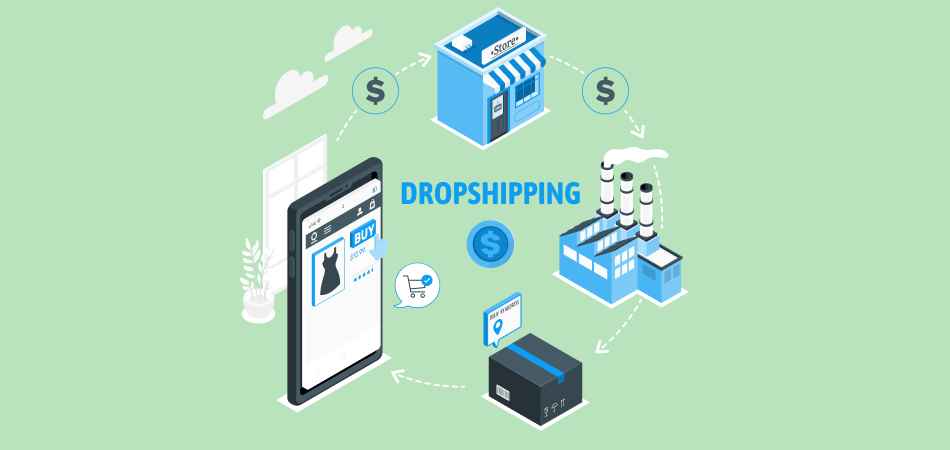How to Increase Your Affiliate Commission

Partnering with brands and promoting their products gives you a chance to earn 5 to 50% on every sale you make.
Sadly, many affiliates need help to hit their targeted income because they still have an employee mindset. The “give me any link, and I will promote it” mindset.
But Affiliate marketing is nothing like a regular job; it’s a business model. So an affiliate marketer needs to be strategic and run it as an entrepreneur instead of spamming your audience with links.
Some affiliates fail to educate themselves. They watch a couple of YouTube videos and think they are set to go. Do you want to increase your affiliate commission and exceed your earning expectations? Then, you need to change your perspective.
This article will not just guide you on improving your affiliate commission; it also covers the red flags you should check before committing to an affiliate program.
What Is an Affiliate Commission
Affiliate commission is the monetary reward an affiliate marketer earns from promoting a company’s brand/products. Some affiliate programs let you earn affiliate commissions for getting clicks to a site, downloads for an app, leads, and free-trial users.
An affiliate marketer has a unique link used for tracking the traffic that directs users to the brand’s website.
Monetizing affiliates is a long game, but with the right affiliate program, you can build an affiliate system that generates passive income for years to come.
7 Ways to Increase Your Affiliate Commission Rate
Are you new to affiliate marketing but have no idea how to get started? Or perhaps you are a site owner struggling to get your desired commission rate? Follow these seven tips, and your affiliate commission will increase in no time.
1. Find the Right Partner
A partnership is the benchmark of every successful affiliate marketing outreach. Brands need the influence of an affiliate marketer to promote their products and services. Approximately 80% of brands have affiliate partnerships.
Also, an affiliate needs to partner with a brand to earn a commission. However, you don’t just partner with every brand that comes your way. You must vet these brands to determine whether their values and system align with yours.
Whether the potential brand fits under B2B or B2C, here are some red flags you should check out before committing to their affiliate program.
Unsuitable Affiliate Reward Program
Different affiliate programs offer different reward options. An affiliate’s reward program is a way of evaluating the quality of a brand’s partnership.
While the rewards in B2C tend to be one-off because of its purchase model, B2B programs offer rewards that span for a long period. So, whenever someone renews their SaaS software, you earn a percentage of every sale.
| Get Started Now to Grow Your Online Business with the Best AliExpress Dropshipping Tool - DSers! |
However, some companies would only offer rewards for the first year of subscription.
Both of these options are good. But anyone would go to the one with perpetuity ROI.
You should also avoid programs that reduce compensation and the percentage of your commission.
Absence of Training For Affiliates' Partners
The brand you partner with should have a clear and easy-to-understand learning management system that streamlines your needs as an affiliate.
It should have accessible metrics to measure performance. That way, you would be able to analyze your performance as well as have access to the right data to help them improve your game.
The training should have a direct line of communication with the affiliate program manager in cases you need to ask questions and need feedback.
If an affiliate program does not have all these, you might want to consider them before committing.
Unhealthy Working Condition
Do you get a mail from the affiliate program manager saying that you have to make a sale by a specific date or you will be removed from the program?
Perhaps the manager takes too long to respond? Or do the advertisers make funny demands that don't sit right with you?
Well, it’s time to drop them and look for a better program that respects you as a partner.
2. Have a Clear Understanding of Different Structure of Commission Rates
Marketers should know about the different structures of affiliate commission rates. That way, they could make informed decisions on the suitable affiliate structure for them.
Many affiliate marketers are only engrossed with making money that they miss out on increasing their affiliate commission. But there’s a clear distinction between a 30% commission rate on every sale you make and a flat rate of $30.
With that said, these are three common types of affiliate commission rates:
Flat Rates Commission
It’s a fixed fee an affiliate gets per order or item sold. The flat rates commission is popular because it’s less sophisticated, unlike other traditional affiliate practices. It’s a good start for new affiliate marketers.
Percentage Commission
Here, affiliates are given a percentage of each sale. Sometimes, they are rewarded with a percentage of the customer’s total order.
Percentage commission is commonly used for premium products, big-ticket items, and other popular products.
Tiered Commission Rates
It uses the incentive-based model to reward affiliate marketers. Tiered commission rates are designed to motivate affiliates to sell more volume. So, the higher the sales, the higher their earned commission. The structure of the commission rates could be like this:
- Sales 1-25: 10% commission rate
- Sales 26-50: 12% commission rate
- Sales 51-75: 15% commission rate
- Sales 75+: 18% commission rate
3. Choose an Affiliate Program that Works for You
Brands open to partnerships with affiliate marketers have different programs. The real question is, how do you identify the affiliate program suitable for you?
Before we get to that, these tips help you find affiliates.
Google Search
You can easily use Google to find affiliate programs. All you need to do is type “affiliate marketing programs ” + [Your niche]. It’s that straightforward.
You will find tons of affiliate programs that fit your niche or industry. But some companies use different terms for affiliate programs, like “associate program” and “partner program.” So, don’t be confused, it's the same thing.
Check the Site of a Company
If there’s a company you like to be part of their affiliate program, you can also check their website. Platforms like Shopify and Amazon have their affiliate program feature at the bottom of their homepage.
When you click on the link, you will be directed to the affiliate page.
Use Social Media Channels
Lastly, you can find affiliate programs on social media. There are tons of forums and communities for affiliate programs on social media platforms like Facebook, Twitter, and Reddit.
Now that we’ve got that cover, here are some tips to help you choose an affiliate program that works for you.
Choose Products You Know or Used before
Don’t just take on any brand’s affiliate program because of its popularity. Ensure that you’ve had a personal experience with the brand.
That’s because promoting a product means putting your reputation on the line. And if you do that, it should be for a brand that delivers on its promises to your audience.
Make Sure the Brand Has a Good Reputation
Reputation is also a factor you should consider when deciding on an affiliate program.
When you partner with brands that offer high-quality products and excellent customer service, it plays a part in satisfying the needs of your audience and the longevity of your partnership program.
4. Gain Your Audience’s Trust
If you ever want a successful affiliate marketing outreach, you need to prioritize gaining the trust of your audience. It’s essential to have repeated visitors/customers as they are the biggest assets of affiliate marketing.
So, how do you gain your audience’s trust?
Start by providing valuable information on the benefits and how to use the products correctly. But don’t just talk; show them how affiliate products can improve their lives.
Additionally, avoid being too salеsy with your approach to marketing and the website content you put out. It would only give the audience the perception that you only care about the commission you’ll make off their clicks and purchase.
But you will be rewarded if the audience can trust you and the affiliate products you are promoting. According to a Survey by Salsify, 46% of consumers are willing to pay more to purchase from brands they trust.
Brand trust is a great way to grow and nurture long-lasting relationships.
5. Consider Search Intent
Besides helping businesses build authority in their industry, search intent can help satisfy a user’s search engine inquiry — which is also Google’s #1 priority.
But the best way to put the searcher's intent into consideration is by doing keyword research.
Keyword research gives you direction on topics you should cover on your affiliate website. Your prospect’s search intent could be transactional, informational, navigational, or commercial.
Some tools can help you identify your search intent. Some of them are Semrush and CognitiveSEO.
6. Share Promo Codes
Coupons, vouchers, discounts, and gift codes are some promotional codes online outlets use to encourage purchases on their website. They are also implemented in the overall promotional marketing strategy of a brand.
Sharing them will help you make more sales on products as well as increase the percentile of your affiliates' commission rates.
7. Explore Different Affiliate Programs
One of the perks of affiliate marketing is that it allows flexibility for marketers to promote multiple products at the same time - as long as the interest of these brands stays strong.
In the same vein, affiliate marketers can explore different affiliate programs. That way, they could opt for the options with a better commission structure.
Most importantly, more than 50% of your total revenue should not be from a single affiliate program. That ensures you won’t be left out dry when the brand decides to terminate the partnership.
Although running a multiple affiliate marketing campaign can be exhausting, especially for a new marketer, it helps to start with two to three programs is a good start.
Final Words
We understand the excitement that comes with the first affiliate program offers. But you must make an informed decision when deciding on affiliate commission rates.
When you follow the tips and look out for the red flags we’ve highlighted here, you will end up setting standards for the affiliate programs you are committed.
About the Author
Velislava Georgieva is a Digital Marketing Specialist at Inbound Blogging, specializing in Content Marketing and Outreach Strategies. Besides her passion for digital marketing, she likes yoga, fitness, and hiking.













 Company
Company
 Why Choose DSers
Why Choose DSers
 Blog
Blog
 Help Center
Help Center



